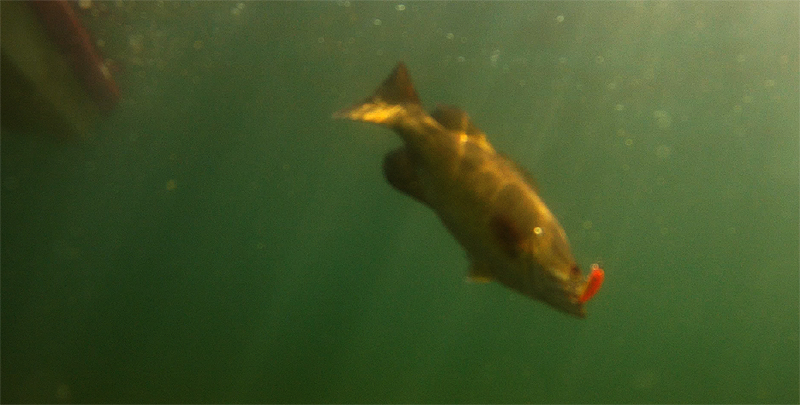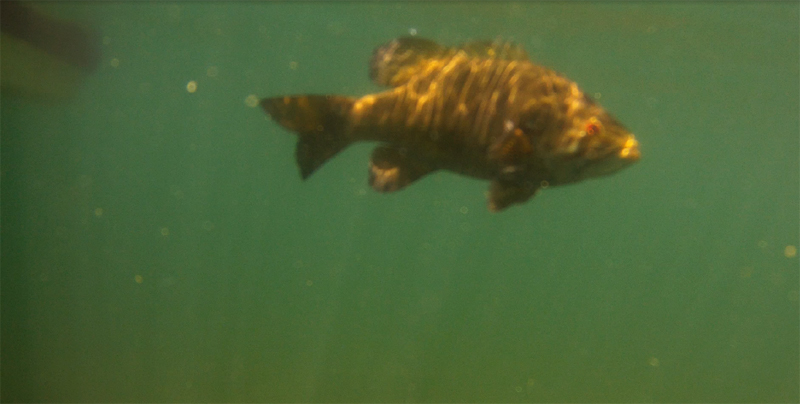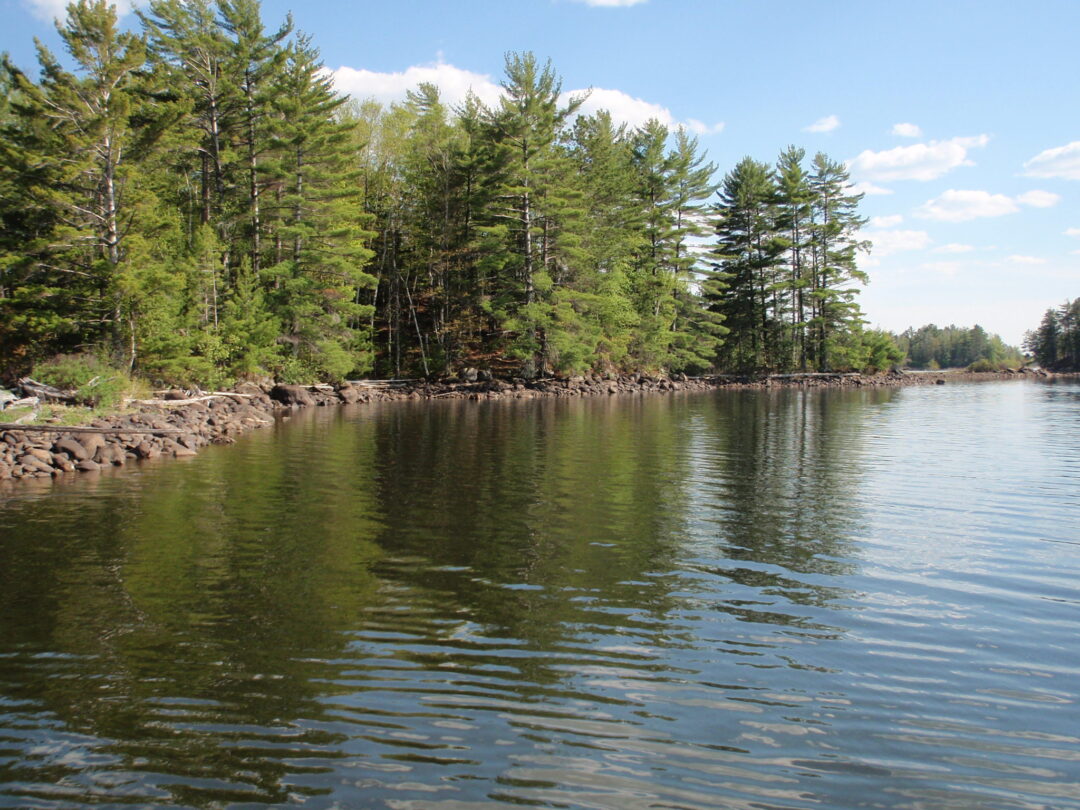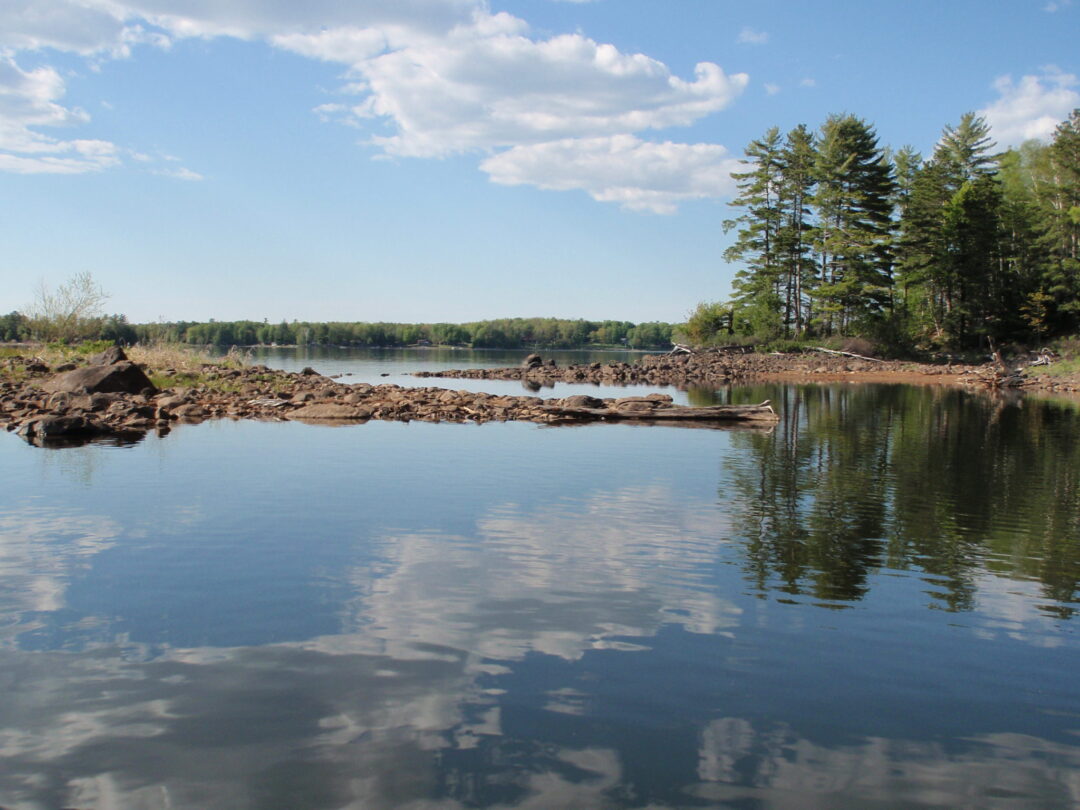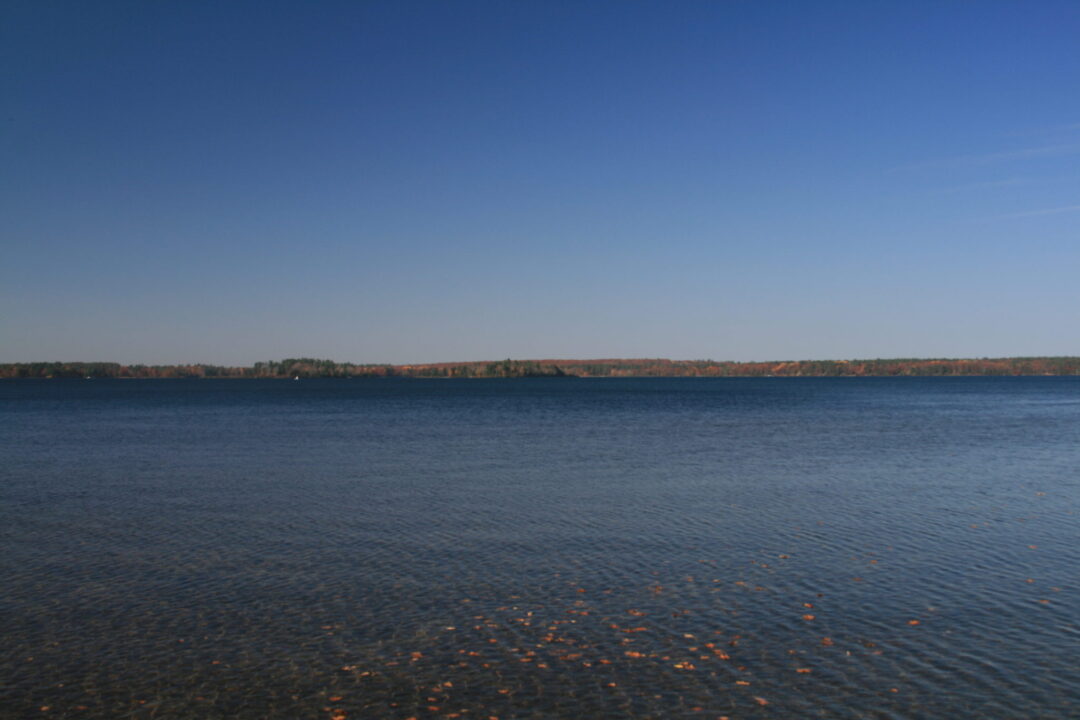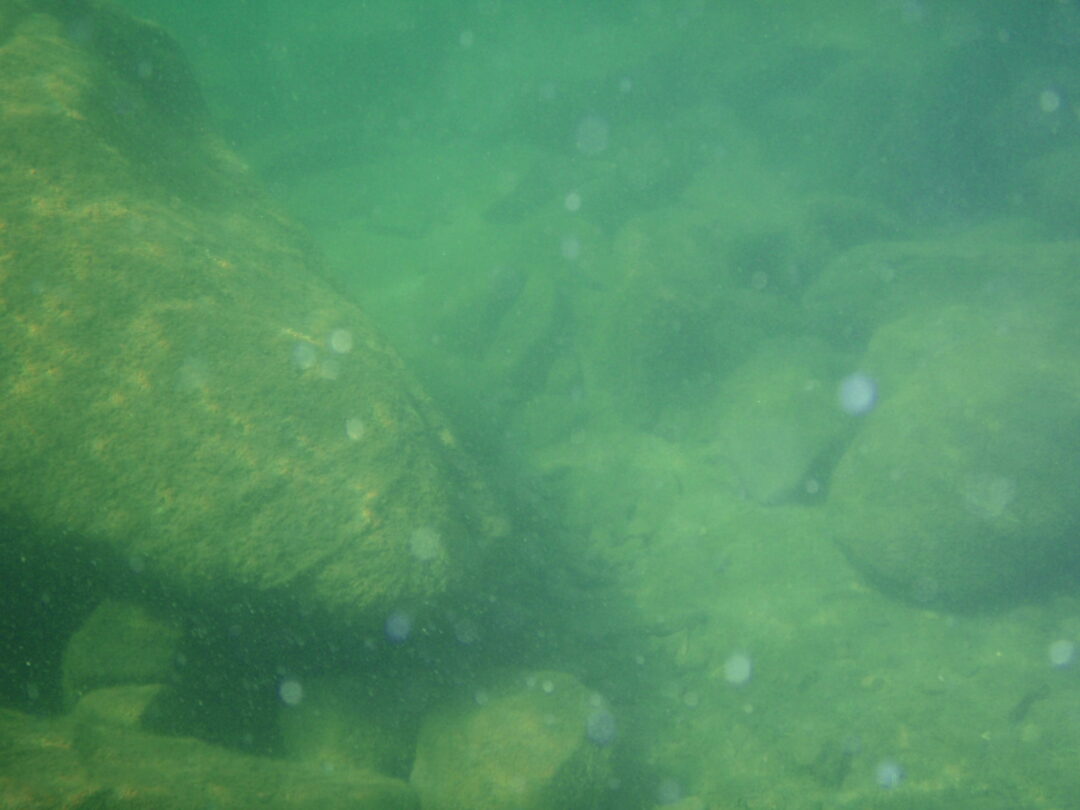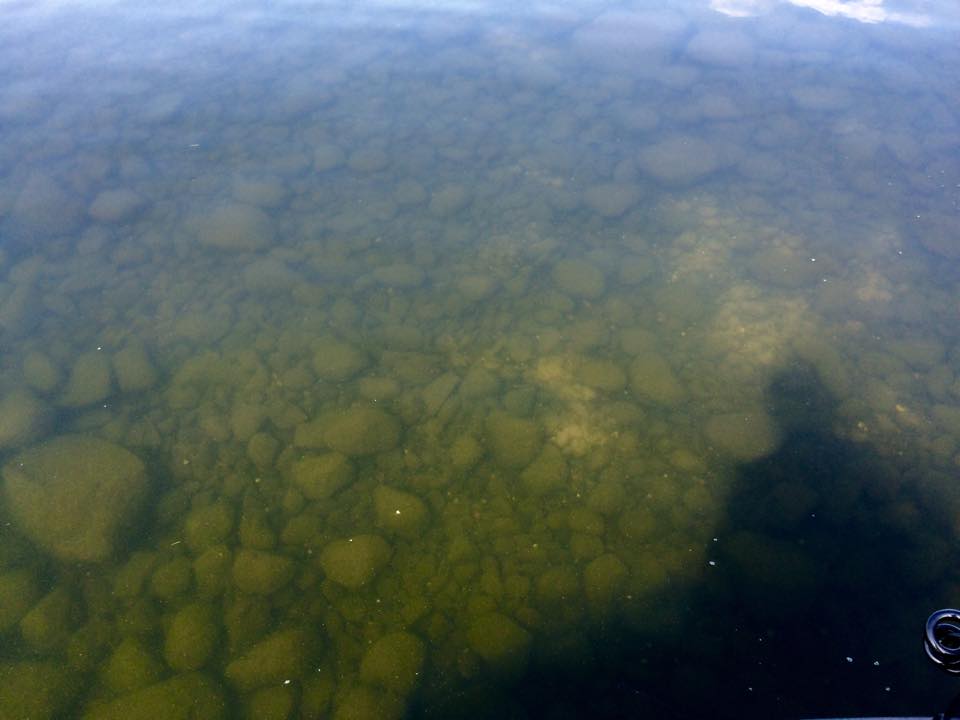 Good populations of smallmouth bass are present in most places. Nearly every productive smallmouth lake I’ve fished contains clear to moderately stained cola-brown water, and features a habitat comprised of sand, rock, gravel, wood, and some weed growth that is mostly occupied by pelagic baitfish and other juvenile species.
Good populations of smallmouth bass are present in most places. Nearly every productive smallmouth lake I’ve fished contains clear to moderately stained cola-brown water, and features a habitat comprised of sand, rock, gravel, wood, and some weed growth that is mostly occupied by pelagic baitfish and other juvenile species.
Traditional smallmouth lakes offer deep and cool water. However, the best lakes contain depths of everything from shallow to deep, and somewhere in between.
Some of the most incredible bodies of water I have ever launched my boat at possess a maze of transitions from shallow to deep water and underwater contour. Such examples are shelves, drop-offs, rock bars, sand bars, sunken islands, trenches, and fields of boulders. Any time you are faced with a lake offering all of this, it will be a smallie paradise. In my opinion, lakes offering too many specific spots to fish in one single day are the places worth spending your most time at.
Although smallmouths are present in most lakes containing the aforementioned variables, big water and lakes larger than 1,000 surface acres are places that will usually contain the bigger fish along with substantial numbers of them too. As opposed to smaller lakes, 50 to 200 acres, that might not receive as much angling pressure, lake size and available habitat are the deterring factors that limit the number of big fish being present. One of the most common axioms in fishing is that big water grows an abundance of big fish. In the case of smallmouth bass, this goes undisputed.
Where to Catch Quality Bass
For a quality fishing experience, there are two characteristics I look for, that will lead me to good fishing: Depth, and water clarity. I head to the clearest and coldest waters I can find. When you get there, good marine electronics will help in locating fish from a variety of depths, and good spots, considerably.
Gin clear waters greatly intimidate anglers, driving them away from some of the best smallmouth waters there are. However, smallmouths easily counter and often oblige, striking baits from great distance aided by bright sunlight and its Smirnoff colored water. Smallmouths are substantially easier to catch from clear water than murky brown and dark water environments. These clear waters also contain the better, trophy fisheries, and cooler water temperatures smallmouths favor most.
Smallmouth are adept visual feeders that are most active in sunny daytime conditions. Most anglers believe that lowlight, overcast days fare best on clear bodies of water. With smallmouths being more active during daytime, and most responsive to sunlight and in a happier mood as visual feeders, don’t let water clarity prevent you from catching. This will work to your advantage if choosing the proper lures, presentations, and colors. Due to their keen eyesight, anglers must disguise their lures and alter their approach, which calls for finesse and matching the hatch.
Keeping your baits looking as natural as possible, in appearance and movement, is the trick to catching fish consistently throughout the northwoods. Scaling down with natural baits that have the abilities to match the hatch is a technique I select for fishing most waters. Drop shot rigs, tube jigs, football jigs, fluke style minnows, jigworms, swimming grubs, and crayfish imitating plastics will usually do the trick. Natural colors representing crayfish and baitfish such as black, brown, pumpkin, sand, smoke, motor oil, and white are excellent choices, as is a natural more subtle approach to working the bait such as swimming, dead sticking, and dropping. If not adept with fishing soft plastics on a jig, consider power fishing techniques. Ripping jerkbaits, burning crankbaits and spinnerbaits, crawling the Carolina rigged soft plastic, and popping or walking a surface topwater will score giant fish as well.
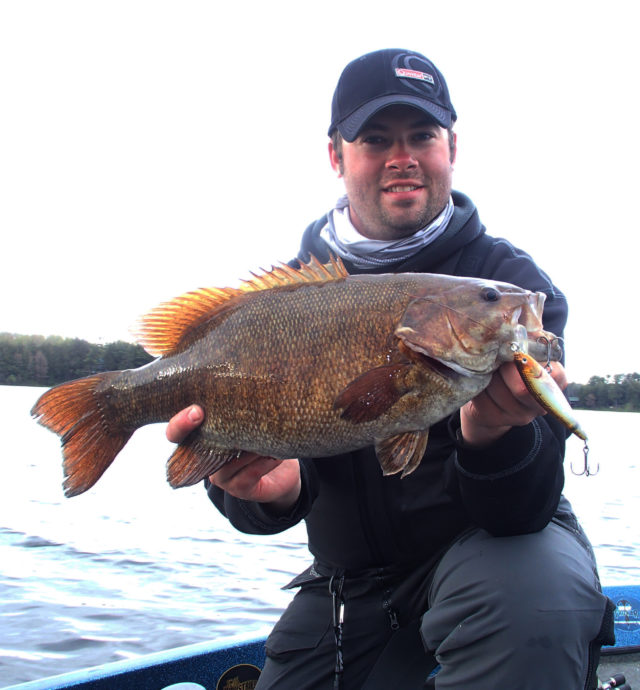 Northwoods bass can be caught on any presentation as long as it works for the lakes being fished and the specific seasons the presentation best fishes in. But experimentation in order to seek patterns, and adapting to conditions and fish location are the most important procedures anglers can make.
Northwoods bass can be caught on any presentation as long as it works for the lakes being fished and the specific seasons the presentation best fishes in. But experimentation in order to seek patterns, and adapting to conditions and fish location are the most important procedures anglers can make.
Clear water results in spookier, more wary fish. Spookier, wary fish leads to deeper daytime locations for feeding and cool water sanctuaries. On our northwoods lakes, don’t be the bank hugging guy fishing the shallows containing fewer and more difficult-to-catch fish. The only exception this works best is pre-spawn, spawn, and pre-turnover periods. Locate the fish deeper along areas of contour and structure with electronics, as most of the time bigger fish will be at these locations.
More than anything and often overlooked, smallmouths mainly use deep water as an invisible source of cover. Meaning, they can hide in darker, deeper water and still ambush prey by trailing open schools of ciscoes and smelt. To combat open water fish, be sure to be equipped with modern fish locators and boat electronics.
Don’t let clear water and depth frustrate you. Trophy smallmouth bass are complex creatures, and these characteristics described are the keys to good fishing.
GEAR RECOMMENDATIONS
Ideal spinning set-ups
- 6 1/2 ft to 7 1/2ft medium to medium heavy action spinning rods
- Size 20 to 30 spinning reels with smooth drags
- 6 to 10lb monofilaments, copolymer, or fluorocarbon lines
- 10 to 20lb braided superline
Ideal casting set-ups
- 6 1/2 ft to 7 1/2ft medium to medium heavy action casting rods
- Baitcasting reels between 4:1 to 7.3:1 gear ratios
- 10 to 14lb monofilaments, copolymer, or fluorocarbon lines
- 20 to 30lb braided superline
Misc. Accessories
- Rubber bag landing net
- Needle-nose pliers
- Digital scale
- Bass bump board
- Polarized sunglasses
- Spool 100% fluorocarbon line for leader material


